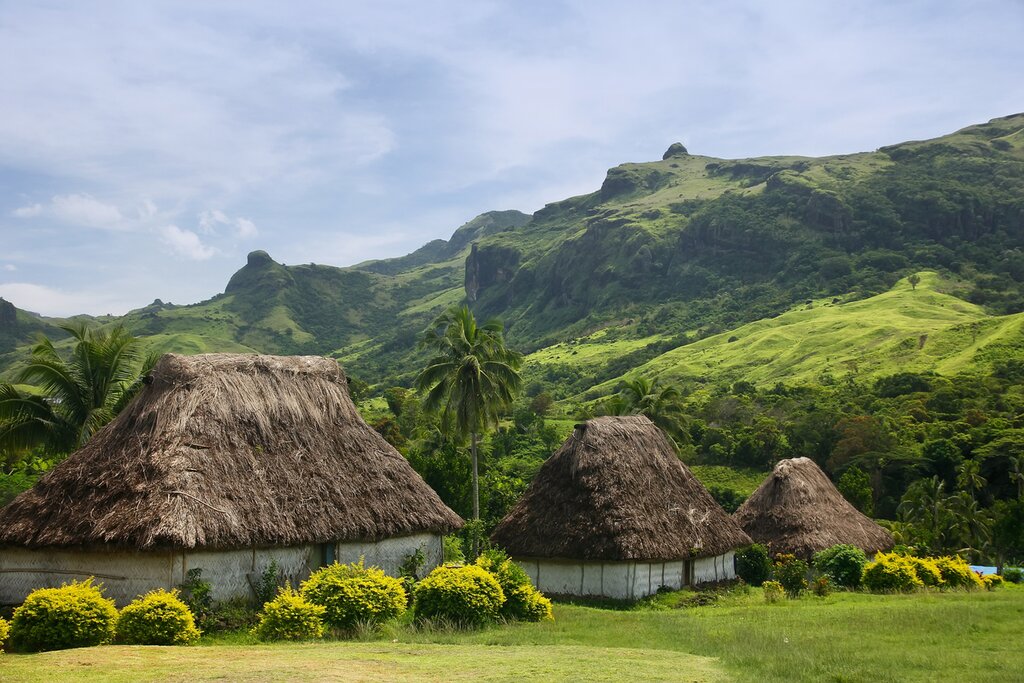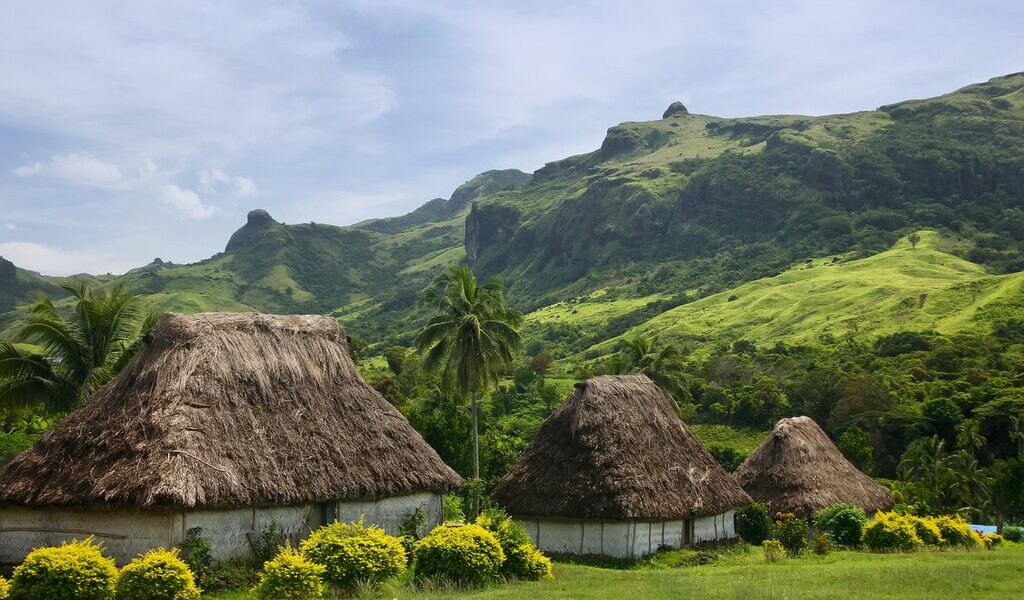
Fiji is an island destination with year-round appeal: hot sunny weather and inviting white-sand beaches. To make the most of island life, visit during the dry season when the conditions are ideal for snorkeling, swimming, and sunbathing. Come during the shoulder months, and you may have a beach to yourself and find a good flight and hotel deal. Meanwhile, the wet season offers rich cultural experiences, fewer crowds, and lower prices, but the weather is more prone to cyclones and daily rain showers.
Fiji, a jewel of the South Pacific, beckons travelers with its stunning archipelago of over 330 islands. This tropical paradise boasts consistently warm temperatures throughout the year, divided into two distinct seasons: the invigorating dry season and the refreshing wet season. When planning your Fijian escape, several factors warrant careful consideration. These include pricing fluctuations, the potential for larger crowds during school holidays, and the specific conditions ideal for enjoying various activities, such as the thrill of surfing or the tranquility of snorkeling.
The dry season in Fiji, often affectionately called “Fijian winter,” spans from May to October. This period typically sees a surge in visitors, drawn by the delightful weather. Families and students on school vacations often flock to Fiji during this time. The dry season offers the most favorable weather conditions, characterized by minimal rainfall and excellent visibility, which is a boon for scuba diving and snorkeling enthusiasts. Conversely, the wet season, which extends from November to April, brings with it the possibility of brief, tropical rain showers. However, this season offers moderate pricing advantages and the allure of less crowded beaches. While many envision Fiji as a primarily beach destination with an abundance of water-based activities, the islands also offer a wealth of cultural experiences that are well worth exploring.
During the dry season, picture yourself basking in the sun at one of the luxurious resorts dotting the shores of Viti Levu, Fiji’s main island. Alternatively, venture towards the remote south shore of Kadavu Island, a location known for increasing your chances of spotting majestic manta rays or even the elusive whale shark. This area also grants convenient access to the magnificent Great Astrolabe Reef, a natural wonder that stands as one of the largest barrier reefs on our planet, offering unparalleled snorkeling and diving opportunities.
If your travel plans align with the wet season, from November to April, be prepared for the possibility of rain. In this case, consider booking accommodation in the western part of the country, a region known as the “dry zone,” where rainfall is typically minimal. Alternatively, you could opt for the capital city, Suva, where a vibrant array of festivals and cultural experiences await, regardless of the weather. While there is an increased likelihood of tropical storms and cyclones during the wet season, particularly from January to March, you can still expect to enjoy plenty of sunshine in both regions. Annual temperatures generally range from a comfortable 64°F (18°C) to a balmy 86°F (30°C), ensuring pleasant conditions year-round.
| Seasons | Pros | Cons | Best for | Where to Visit |
|—————|——————————————————————-|—————————————————————————————————|———————————————————-|—————————————————————————————————————————————————————————————————————————————————————————————————————————————————|
| Dry (May-Oct) | Warm weather and sunny skies, perfect for water activities | More tourists and families due to school holidays; higher prices for flights and accommodation | Sunbathing, surfing, snorkeling, scuba diving, swimming | Sunbathe at Liku Beach, Turtle Island, or Yasawa Island; surf at Cloudbreak in the Mamanuca Islands or Natadola Bay; scuba at the Black Forest Dive Site or the Great Astrolabe Reef |
| Wet (Nov-Apr) | Fewer crowds; lower prices | Higher chance of a cyclone or tropical storm (Jan-Mar); short bursts of rainfall during the day | Cultural experiences, visiting temples, hiking, seeing waterfalls and tropical plants | The “dry zone” in the west near Nadi |
The dry season in Fiji, which corresponds to the cooler months in the Southern Hemisphere, offers a delightful combination of warm air and water temperatures. Highs typically range from a comfortable 78°F to 82°F (26°C-28°C), making it an ideal time to indulge in sunbathing and a wide range of water activities, including swimming, diving, snorkeling, and surfing. Liku Beach, located in the enchanting Mamanuca Islands, boasts a Fijian name that translates to “sunset,” and it truly lives up to its reputation as one of the most picturesque beaches in Fiji. Its swaying palm trees and inviting turquoise blue waters create an idyllic setting for relaxation. For experienced surfers seeking an adrenaline rush, Cloudbreak in Tavarua offers the opportunity to ride waves of up to 20 feet (6 m). Beginners can also find suitable conditions at Natadola Bay.
Fiji’s unique location, surrounded by the largest coral reef system in the Southwestern Pacific, makes it a diver’s paradise. The Black Forest Dive Site is home to ancient black coral trees and an array of diverse fish and marine life, ensuring an unforgettable underwater experience. Meanwhile, the Great Astrolabe Reef near Kadavu Island stands as the largest living organism in Fiji. This underwater wonderland offers an abundance of corals, marine life, and even shipwrecks, all waiting to be explored beneath the surface.
For travelers seeking a more active adventure, consider dedicating a day to exploring the lush rainforests and discovering hidden waterfalls in this remote corner of the world. The Lavena Coastal Walk leads you on a scenic journey across volcanic terrain, through Taveuni‘s fruit orchards, across gentle creek crossings, and past lush tropical plants and rare wildflowers, culminating in a visit to a secluded waterfall. To avoid the peak tourist season, consider planning your Fijian trip during the shoulder months of May and October, when you’re more likely to find affordable flights and accommodations.
**Events in the Dry Season**
* **Bula Festival**, Nadi: This annual celebration honors Fijian history and heritage with food, music, dance, and competitions in July.
* **Fiji Jazz and Blues Festival**, Suva: In May, music lovers gather to enjoy performances by jazz and blues artists from around the world.
* **Fire Walking Festival**, Suva: Around July or August, locals in traditional attire walk barefoot across hot embers, symbolizing self-sacrifice and devotion, and to cleanse themselves of impurities.
* **Ocean Swim Fiji**, Nadi: Swimmers of all levels can participate in this luxury dip with breathtaking ocean views.
* **Hibiscus Festival**, Suva: Held in August, this festival celebrates Fijian culture and diversity with entertainment, a float procession, talent contests, and an art village.
* **Fiji Day, nationwide**: Celebrated in October, Fiji’s National Day features ceremonies and performances showcasing the country’s religion, history, and culture.
The wet season, which spans from November to April, presents a unique opportunity for budget-conscious travelers to experience the beauty of Fiji. During this time, prices for accommodation and flights tend to drop considerably. For an even more advantageous experience, consider traveling during the brief shoulder season between April and May. Temperatures remain pleasantly warm, but the crowds are significantly smaller, potentially leaving you with an entire beach all to yourself. Furthermore, April marks the end of the rainy season, meaning there is less rain to contend with.
The weather during the wet season should not deter you from visiting Fiji. Contrary to popular belief, it does not rain continuously throughout the day. Instead, rainfall typically occurs in short, heavy showers that are often localized. The beaches near Nadi in the western region of Fiji generally receive the least amount of precipitation, making them an excellent choice for your stay during this time. While there is an increased risk of tropical storms or cyclones, the wet season also provides an opportunity to venture beyond the beach and explore Hindu temples, hike among tropical plants, and immerse yourself in the local culture.
Many travelers arrive in Nadi, home to the country’s largest airport. While you are here visit Sri Siva Subramaniya, the largest Hindu temple in the Pacific. Marvel at the temple’s vibrant colors and towers adorned with intricate carvings of deities, a testament to Dravidian architecture.
For a truly authentic local experience, consider partaking in a kava ceremony. Kava is a traditional drink made from the root of the kava plant. Locals may invite you into a bure, a traditional wood and straw hut, to teach you the rituals associated with drinking kava and share its calming effects.
Another unique cultural experience is the lovo, a traditional Fijian feast reminiscent of a Hawaiian luau. Witness a pig being roasted in an underground oven, wrapped in banana leaves. Enjoy the meke, a traditional dance performance that narrates a story. Traditional villages offer the most immersive settings for these cultural experiences.
**Events in the Wet Season**
* **Diwali**, **nationwide**: Fijians celebrate the Hindu Festival of Lights in late October or early November with fireworks, feasts, and prayers to the goddess of prosperity.
* **The Rising of the Balolo**, **Viti Levu** and **Vanua Levu**: Twice a year, in October or November, the balolo, an edible sea worm, rises from the coral reefs and is harvested by local Fijians.
B-763

